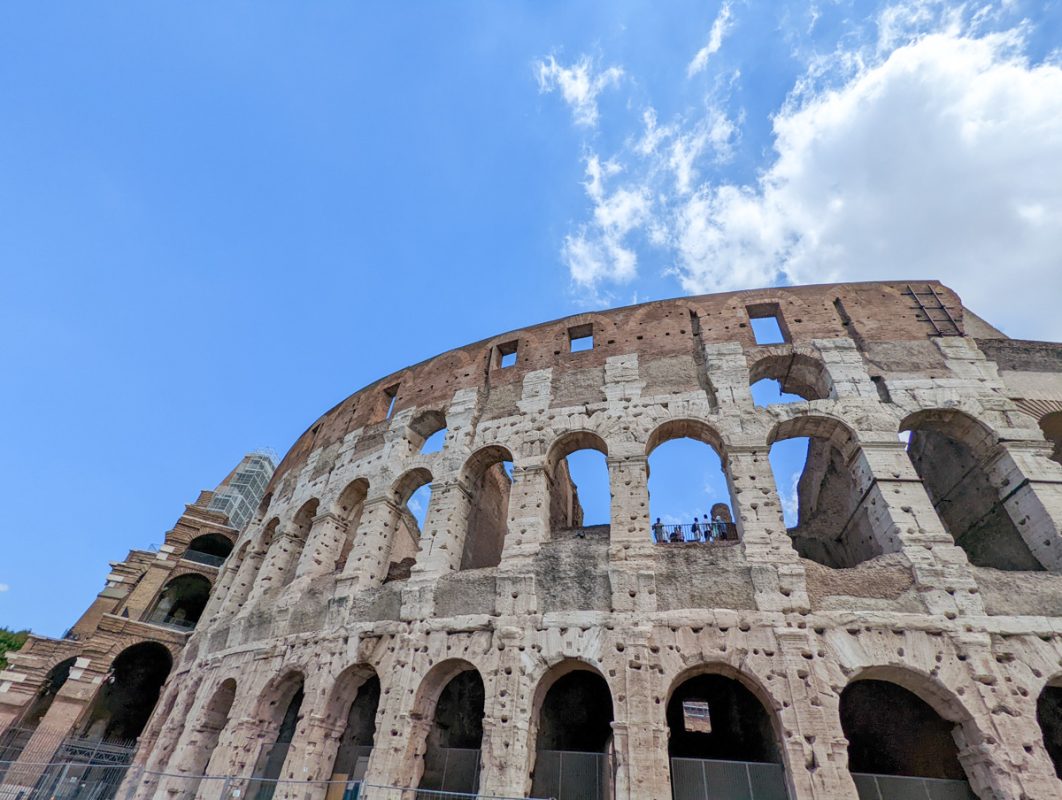Pretty much every traveller has Rome, the Eternal City, on their European travel bucket lists. But what if you can only visit in winter? Is Rome in January still worth it?
Absolutely! There are so many reasons to visit Rome in January.
From fewer crowds and cheaper prices to the heartwarming magic of Italian food, Rome may even be more enjoyable in the winter than in the dead of summer.
The vast history, rustic architecture, and enchanting atmosphere of Italy’s capital city don’t diminish in the winter!
This blog post may contain affiliate links
What’s the weather like in Rome in January?
Prepare for colder weather in Rome in January, with highs of 12°C (53.6°F) and lows of 4°C (39.2°F).
However, while it may be the coldest month, it’s much warmer than many other winter city break destinations in Europe!
There are around 9 days of rain in Rome in January, but it’s rare that precipitation will last all day.
So, while Rome’s not quite known for its winter sun, you’ll probably experience milder weather than elsewhere on the continent while you’re here!
Best reasons to visit Rome in January
Fewer tourists, free attractions, cooler weather are just some of the reasons to visit Rome in January, traditionally its coolest and quietest month! Here’s our full list:
Fewer Tourists
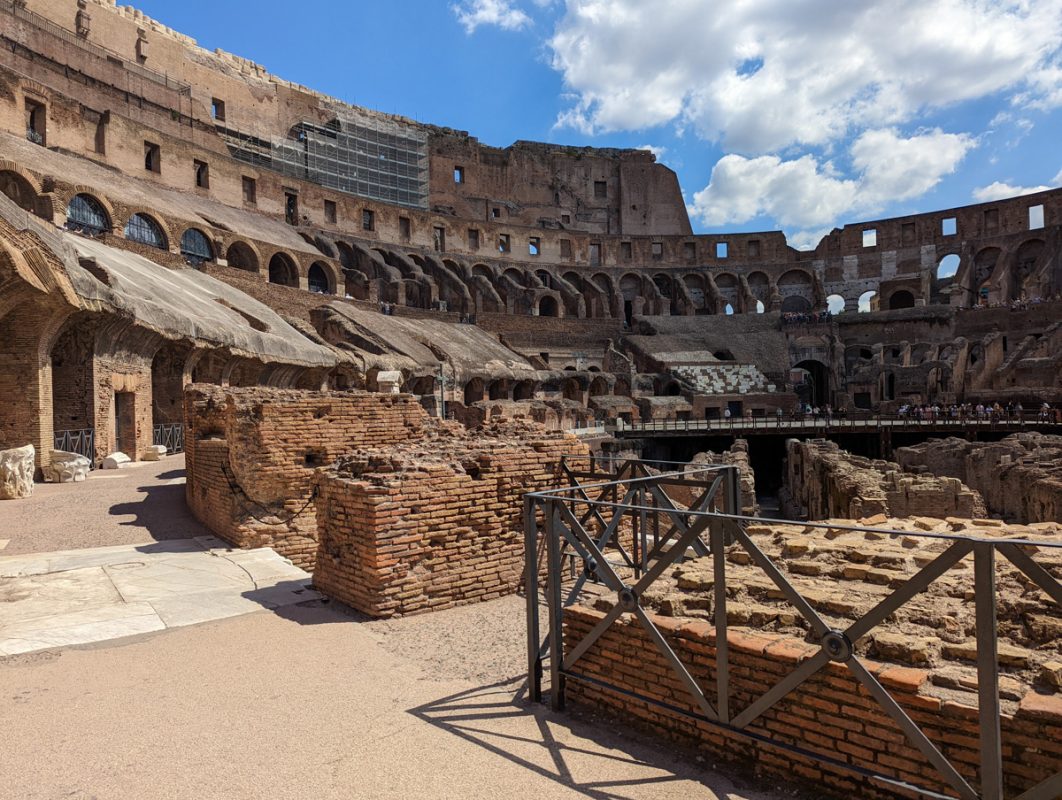
As one of the most visited cities in the world, massive crowds can be a huge obstacle while exploring Rome.
Tourists from all over the globe stream into Rome to see the Colosseum, the Vatican, and other iconic Roman landmarks.
While visiting Rome during the warm summer months (which is peak season), the crowds can get so intense that they almost detract from the beauty of the city (almost).
Visiting Rome in January means you will encounter few, if any crowds!
There may be some crowds around Christmas, but once January hits you’ll find all the world-famous tourist attractions to be pretty much deserted.
And if you venture to some of the non-touristy spots in Rome, you might just be the only one there in addition to the locals! If there’s ever a time to snap a photo of the Trevi Fountain with no tourists getting in the way, it’s January!
Free Attractions On The First Sunday Of The Month
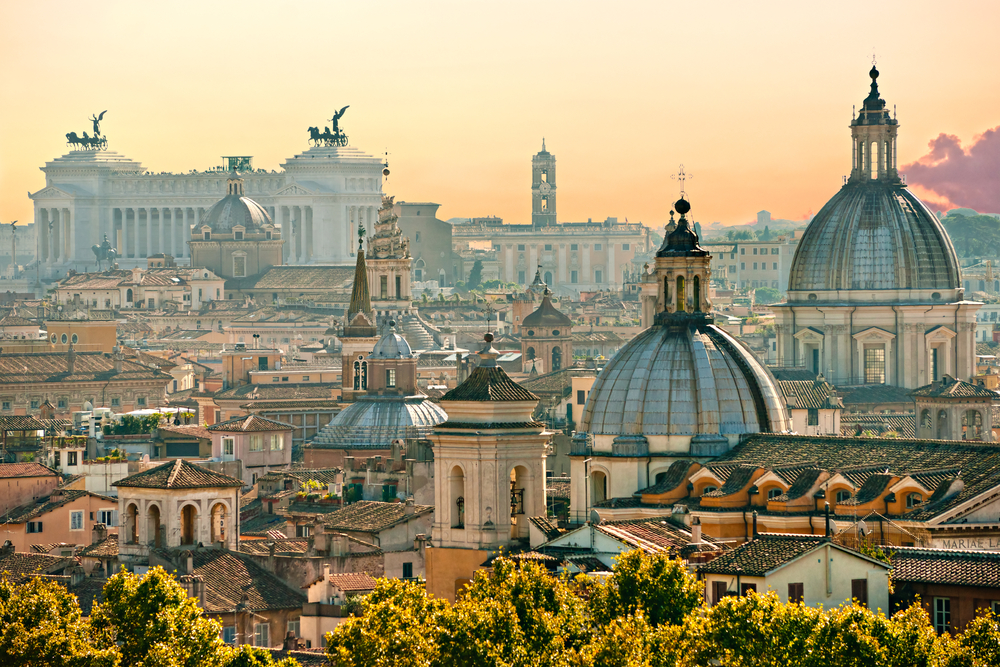
In all honesty, Rome is an expensive city.
But if you know a few hacks, there are some ways to save a few euros.
One of them is to make use of free attractions!
Rome, and a few other Italian cities, have an incredible tradition where certain attractions are free on the first Sunday of the month.
So all year long, important cultural, archaeological, and historical sites around the city are completely free on the first Sunday of each month.
This is a huge treat, especially considering that many of Rome’s attractions have an entrance fee.
On first Sundays during spring or summer, popular attractions and museums will have lines that are miles long as swarms of tourists wait for their free entry.
But in January, you’ll have a better chance of getting a decent spot in line on the first Sunday!
Attractions included in the first Sunday include the Colosseum, Roman Forum, Castel Sant’Angelo, and many others.
Heartwarming Food
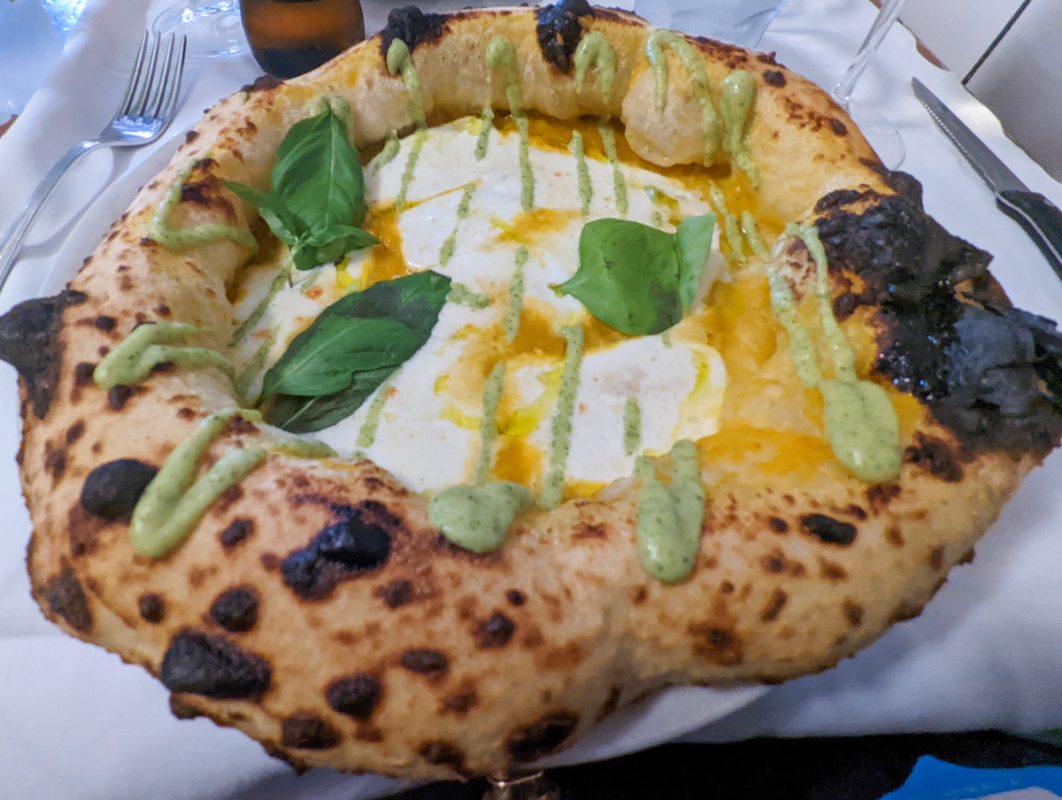
Winter is the perfect time to indulge in all the heartwarming Italian food and drinks!
From hearty plates of pasta to fresh espressos, lots of Italy’s classic dishes are known for how they warm the soul.
While exploring Rome in chilly January weather, hopping into a cafe for a pastry or sitting down in a local restaurant for a delicious meal just feels so much more essential than it does in the heat of summer!
Rome itself has lots of heavy foods that taste like pure heaven in winter.
Be sure to try Roman pizza, which differs from normal pizza because it is shaped like a rectangle and is served from take-away windows by weight.
So you can order a bunch of different small slices to sample every flavor! Also be sure to try trapizzino, a classic Roman street food.
This triangular bread pocket stuffed with sauteed meats and vegetables makes for the perfect mid-day snack while exploring Rome in January.
Of course, excellent food is a given, wherever in Italy you are – and it doesn’t change in winter!
So if you’re exploring the country on a wider scale and want to try the best pasta in Milan or pizza in Naples (where it originates!), you’ll find plenty whatever the season.
Cooler Temperatures

Though cold temperatures might deter some people from visiting Rome, this actually makes exploring much more pleasant!
Summer in Rome can feel unbearably hot and stuffy, especially with all the crowds. Walking is the best way to sightsee in Rome, and you can cover so many miles in just one day.
But in summer, all that walking means you’ll be exhausted and sweaty much quicker!
During January, the daily temperatures are around 50 degrees Fahrenheit (around 10 degrees Celsius).
So it’s cool, but not freezing during the day.
In fact, it’s one of the warmer places in Europe in January.
These cool temperatures make it much nicer to walk around the city. As long as you pack warm clothes to keep you toasty at night and on cooler days, you’ll love sightseeing in Rome with a bit of a crisp chill in the air.
Cheaper Flights
Another plus to visiting Rome on a winter trip is cheaper flights!
Because January is off-season for travel in Italy, there is less demand for plane tickets and you can find incredible deals.
Flying into Rome from other continents can be pricey, so saving your trip for January can save you lots of money on flights.
If you’re flying into Rome from elsewhere in Europe, budget airlines like EasyJet, RyanAir, and WizzAir can sometimes have fares for under 50 Euros – or even cheaper in the low-season winter months.
Less Traffic
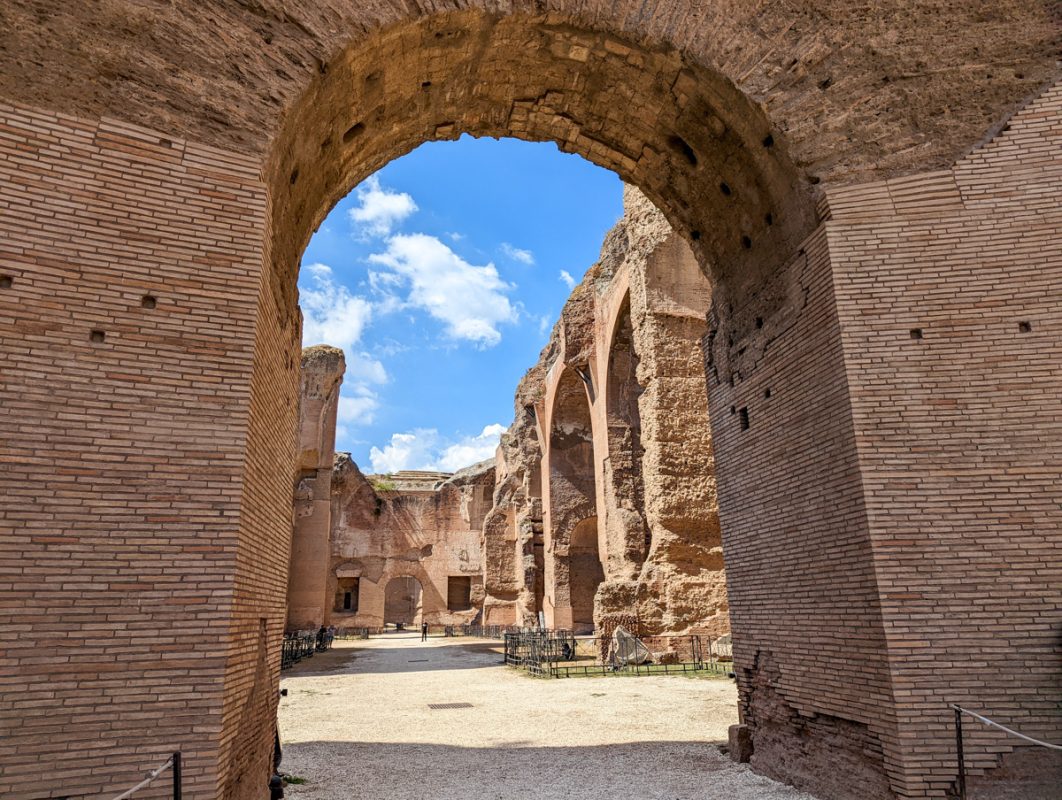
One of the common stereotypes about Italy is that the roads are hectic and the local drivers are crazy.
This may not apply to smaller towns, but in big cities, you will encounter lots of busy streets and chaotic intersections. Especially during the peak summer season in Rome, there can be an insane amount of traffic!
During January, the roads in Rome are much quieter. So if you’re renting a car during your visit to Italy, you won’t need to stress as much while driving through the city.
However, Rome is a very walkable city and there is good public transport, so you may not even need to rent a car.
If you’re renting a car for day trips to other destinations around Italy, you can have peace of mind knowing that the roads won’t be super crowded.
Christmas Decorations during the first week
If you’re planning to visit Rome in winter, you may be inclined to go in December.
This is the heart of the holiday season, so you’ll get to see some charming Christmas decorations!
But to beat the high prices and crowds of the holidays, consider visiting Rome in January instead. During the first week of January, you might get to see some lingering decorations!
Keep in mind, Rome isn’t known for its Christmas Markets.
Compared to other European countries like Germany or Denmark, Italy doesn’t go all out for the Christmas markets.
But Rome does have a few displays of festivity, particularly in Piazza Navona.
So if you’re visiting Rome in the first week of January, do some exploring to spot some twinkly lights, decorated trees, and cozy market stalls.
You Might See Snow!
Believe it or not, it sometimes snows in Rome!
It’s pretty rare – the average temperature is much higher than freezing – but cold weather does happen.
If there is snowfall in Rome, it will probably be sometime in January or February if the temperatures drop low enough.
The last time it snowed in Rome was in February 2018, and before that, it was in 2012. So it’s not necessarily a frequent occurrence, but when it does happen it’s super exciting!
Snow may not be something you’d expect to see while visiting Rome, but it puts a surprisingly beautiful twist on the city.
Seeing famous landmarks like the Colosseum, the Piazza Di Spagna and the Roman Forum blanketed in fluffy white snow is a rare treat.
So if you’re visiting the beautiful city of Rome in January, know that there’s a small chance of a magical snowfall!
What to pack for Rome in January?
As the weather can drop to quite low, I’d recommend packing a warm coat (you’ll need it in the evenings!). However, you might be comfortable without a woolly hat, scarf and gloves – unless snow is forecasted, of course!
Don’t forget comfortable walking shoes – the weather is mild enough to spend quite a lot of time walking around outdoors!
Best things to do in Rome in January

Discover the magic of Rome in January! Enjoy the city’s iconic landmarks like the Colosseum and Vatican City with fewer crowds, indulge in traditional Italian cuisine, and immerse yourself in art and culture at the galleries and museums.
Don’t miss out on the exciting festivals and concerts happening throughout the city. Take a leisurely stroll through the charming streets and squares, including the picturesque Piazza Navona and Trastevere. Rome in January is an experience you won’t forget!
See the Piazza del Popolo
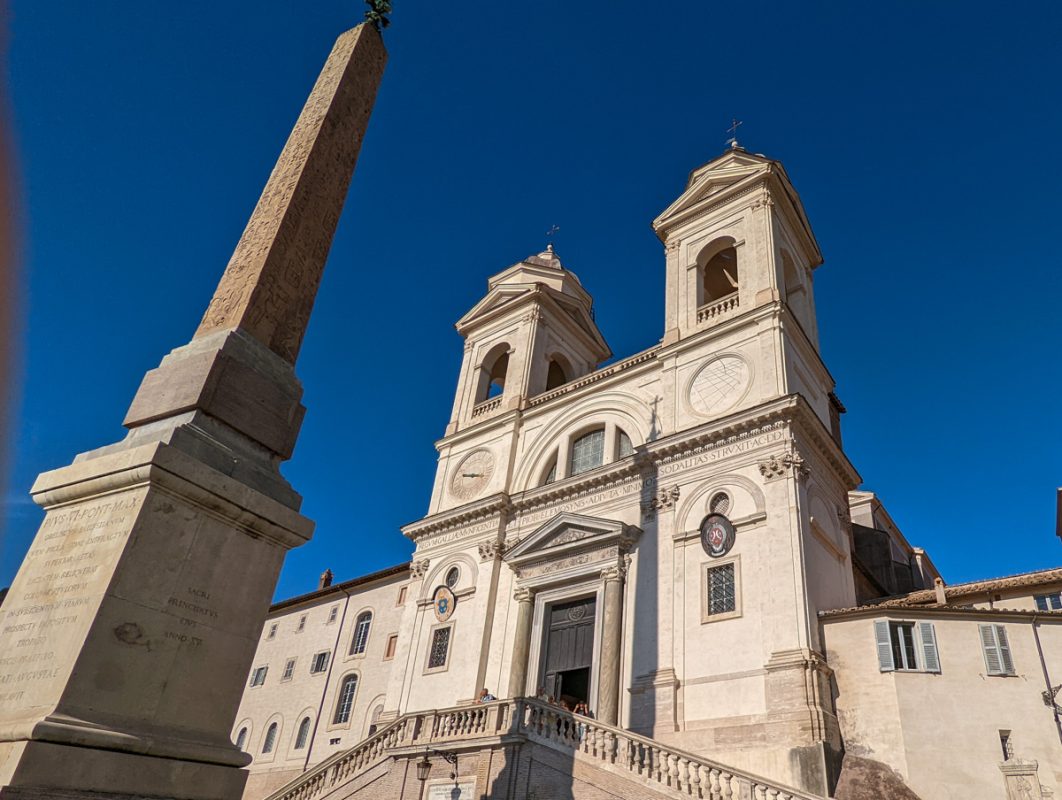
Make sure to add Piazza del Popolo to your list of must-see attractions when in Rome during January!
This stunning public square, located at the city’s northern entrance, boasts impressive architecture like the near-identical Santa Maria dei Miracoli and Santa Maria in Montesanto and a 36-metre Egyptian obelisk (the city’s oldest!).
Take advantage of the fewer crowds in January to capture unforgettable photos and soak up the square’s grandeur.
Europe in winter editor’s note: There are a few bars and restaurants along the side serving drinks, but be aware of these – they’re incredibly expensive (we were quoted €17 for an Aperol spritz here once, and down the road they were €7!).
Explore the Vatican City
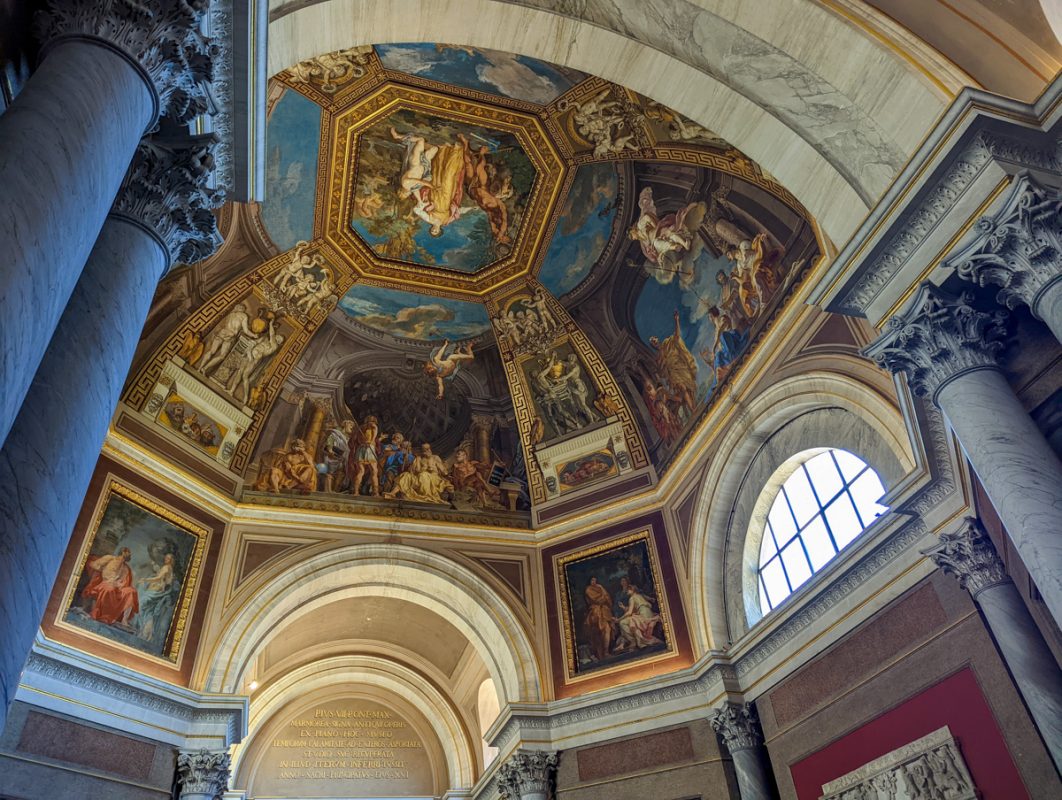
Home to some of the world’s most renowned works of art and architecture, the Vatican City is the smallest country in the world and, for Catholic Christians, it’s the holiest.
The Vatican City boasts an impressive collection of masterpieces, including Michelangelo’s famous Sistine Chapel ceiling.
Marvel at the stunning St. Peter’s Basilica, the largest church in the world (!!) and explore the Vatican Museums, which house over 70,000 works of art, from ancient sculptures to Renaissance masterpieces.
Visiting in January means smaller crowds and shorter lines, making it the perfect time to immerse yourself in the beauty and history of this magnificent city-state.
I recommend this tour with Get Your Guide to fully learn about the complex’s history.
Enjoy a lesser-crowded Colosseum
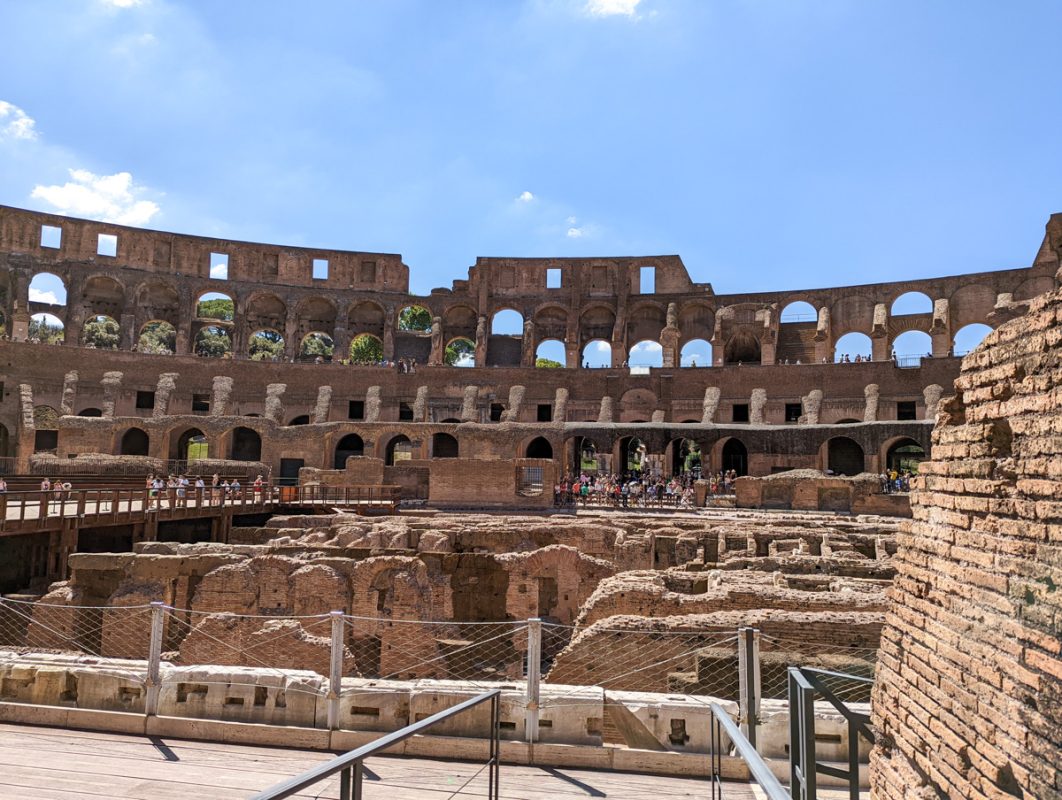
No visit to Rome would be complete without a trip to the iconic Colosseum, one of the top historic landmarks in the world.
This ancient amphitheatre, once the site of brutal gladiator battles and public spectacles, is now one of the city’s most popular attractions; you’ll literally walk in the footsteps of Romans as you explore!
Visiting in January means avoiding the peak tourist season and enjoying shorter lines, giving you more time to take in the impressive architecture and imagine what life was like in ancient Rome.
However, you can still pre-book tickets by clicking here.
Browse Rome’s best museums
Looking for an escape from the crowds? Explore Rome’s top museums in January for a truly unforgettable experience.
The Capitoline Museums, located on Capitoline Hill, are often thought to be the oldest museums in the world and offer ancient Roman artifacts and stunning paintings, including the famous She-Wolf sculpture.
Get a taste of contemporary Italian art at the MAXXI or dive into the works of Italian masters at the Galleria Borghese.
Trevi Fountain
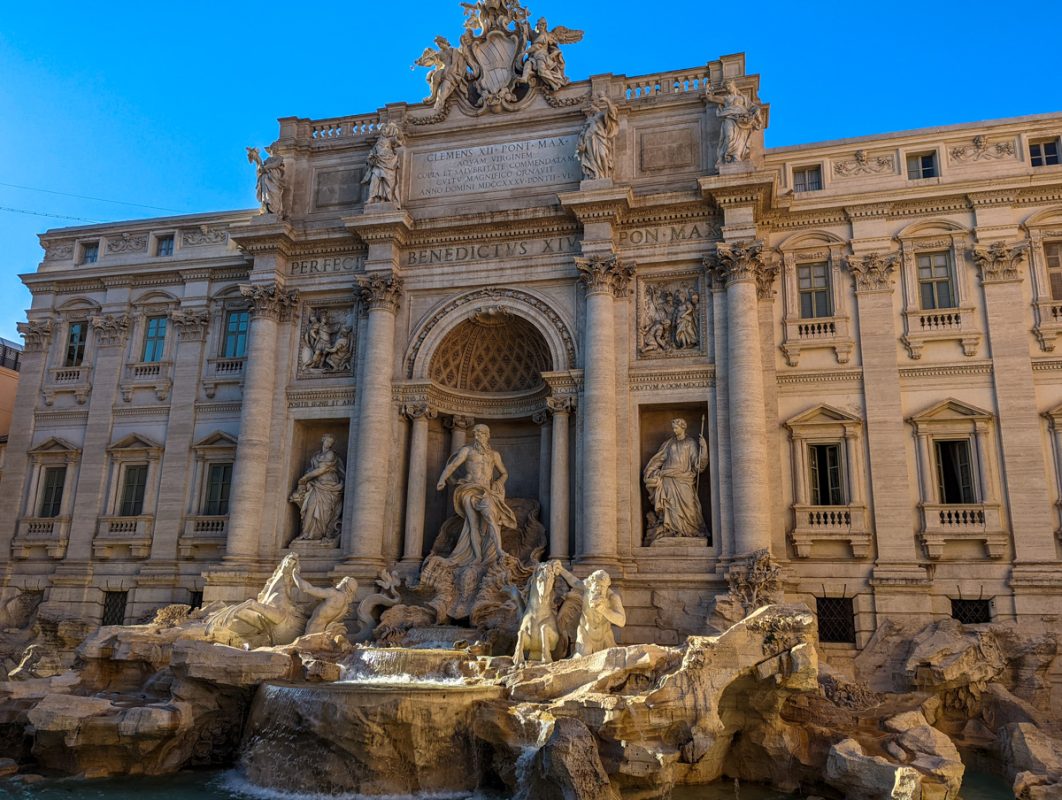
Make a wish and toss a coin into the stunning Trevi Fountain – one of the most famous fountains in the world.
It features the sea god Oceanus and intricate sculptures, is a must-visit attraction for any Rome itinerary.
Legend has it that throwing a coin into the fountain ensures a return trip to Rome, while two coins promise a new romance.
Visit in January to avoid the crowds and enjoy the fountain in all its illuminated glory at night.
Do a walking tour with SANDEMANS
Do you prefer to learn about Rome on foot?
Join a walking tour with SANDEMANS!
Discover the city’s rich history and stunning architecture as you stroll through iconic neighbourhoods like Trastevere, Campo de’ Fiori, and the Jewish Ghetto.
Learn about the fascinating stories behind landmarks like the Pantheon, Piazza Navona, and the Trevi Fountain, all while taking in the city’s lively street scenes and charming alleys.
The best part? SANDEMANS walking tours are led by expert local guides, giving you an insider’s perspective on the city’s hidden gems and lesser-known sights.
Eat!
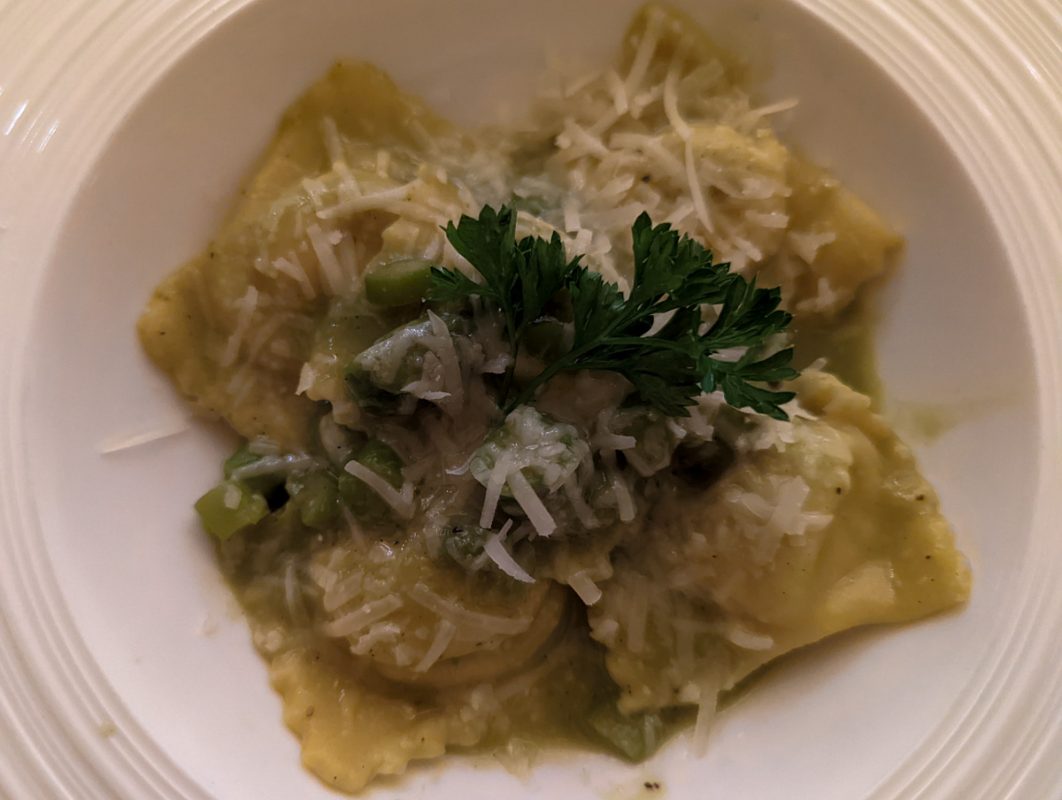
Of course, a major addition to your Rome itinerary – any time of year – is to eat!
Two stand-out restaurants are Ad Hoc and Piccolo Buco.
Ad Hoc serves delicious truffle-inspired dishes with excellent wine pairings. A small, intimate restaurant, there’s no rush here – you’re welcome to enjoy the various courses and extra meal additions (there’s a few!) in a relaxed ambience. Although the meal is an entire experience, the bill was a lot less than we expected (around 100 euros for two people with a bottle of wine and one extra drink).
Piccolo Buco is a hearty pizza restaurant, serving up fresh, doughy pizzas drizzled with olive oil. This isn’t a local secret by any means – there are queues for the lunch rush from 11:45 am and they stay constant all day – but it’s unquestionably worth it.
FAQs about visiting Rome in January

How cold does it get in Rome in January?
The coldest that it gets in Rome in January is usually down to 4°C (39.2°F); although it’s usually only this cold during the night time. In the day, it can be much milder – much more so than other destinations throughout Europe – and you might even see some winter sun.
What to wear in Rome in January?
Rome in January can be quite chilly, so don’t forget to pack warm clothes such as a coat, gloves, and a scarf. However, during the day it can still be mild enough for a sweater or light jacket – and pack comfortable shoes for walking! Rome is quite fashionable, but make sure that comfort comes first!
Is it crowded in Rome in January?
Compared to peak travel season, Rome in January is much less crowded. While some of the top attractions may still have lines, they will be significantly shorter than during the summer months. Visiting in January also means lower hotel prices and a more relaxed atmosphere, making it a great time to explore the city.
Is Rome colder than New York?
While both Rome and New York experience cold temperatures in the winter, New York is generally colder than Rome due to its northern latitude. New York typically gets a lot more snow! However, Rome can still be chilly in January, so don’t forget to pack warm clothes.
Is January a good time to visit Rome?
Yes! January is a great time to visit Rome, with lower crowds, mild weather, and lower hotel prices. While it may be too cold for swimming or sunbathing, there are still plenty of indoor activities to enjoy, such as museums, art galleries, and restaurants. Plus, the ancient city is less crowded, making it easier to explore at your own pace.
Are you ready to visit Rome in January?
There’s a reason why the Italian capital is one of the most popular European cities to visit any time of year – with mild temperatures and far fewer crowds at its many historic sites, you’ll love exploring Rome in January!

